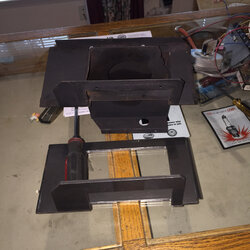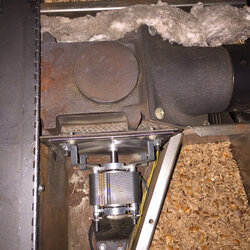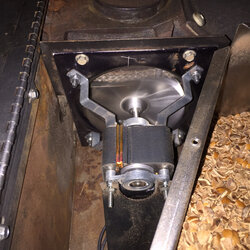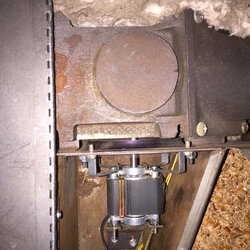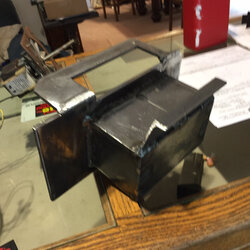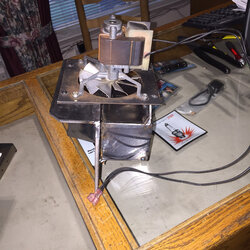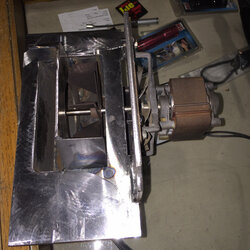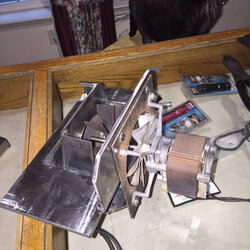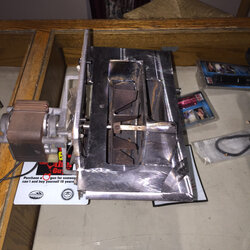Recently scored a bunch of Good used parts for the Whitfield Prodigy
I found a top casting (not even listed in the original spare parts list from mfg)
A draft booster fan and the lower sheet metal booster fan housing that bolts to the casting.
An aftermarket updated draft fan with the larger 5/16 shaft
A nice convection blower (These have a hall effect sensor to allow the heat setting on the board to control the fan speed)
These are no longer available
I will not need the hall effect set up but the price of the fan was too good to pass up
An auger motor and an auger complete
A pressure switch
A door switch
Odds and ends of wiring harness and other tid bits
Guy had 2 factory control boards, one good one dead (passed on those)
The casting is sweet, but the exhaust fan housing is nearly rotted out in a few places.
Buttttttttttttttttttt, the fan housing is a perfect pattern to measure up to make a new one.
I stopped by the steel yard yesterday and for $11 got all the stuff I need to fabricate a heavier box box.
The original was very light steel, likely 18 gauge and the area around the bolts that secure it to the casting would bend when the bolts were snugged up.
I got 1/4 inch for the main plate and 1/8 inch for the remainder of the box
The original stuff was all stamped and formed then welded.
I will machine the main plate then fit and piece it together to the original dimensions.
May never need it, but it will be there if we do.
The stove this stuff came from looks to have been left out in the weather.
When water gets into the ashes the caustic mess eats up steel real quick.
I had the option to buy the chassis, but its a mess, and not worth hauling home.
More treasures
Yessssssssssssss
I found a top casting (not even listed in the original spare parts list from mfg)
A draft booster fan and the lower sheet metal booster fan housing that bolts to the casting.
An aftermarket updated draft fan with the larger 5/16 shaft
A nice convection blower (These have a hall effect sensor to allow the heat setting on the board to control the fan speed)
These are no longer available
I will not need the hall effect set up but the price of the fan was too good to pass up
An auger motor and an auger complete
A pressure switch
A door switch
Odds and ends of wiring harness and other tid bits
Guy had 2 factory control boards, one good one dead (passed on those)
The casting is sweet, but the exhaust fan housing is nearly rotted out in a few places.
Buttttttttttttttttttt, the fan housing is a perfect pattern to measure up to make a new one.
I stopped by the steel yard yesterday and for $11 got all the stuff I need to fabricate a heavier box box.
The original was very light steel, likely 18 gauge and the area around the bolts that secure it to the casting would bend when the bolts were snugged up.
I got 1/4 inch for the main plate and 1/8 inch for the remainder of the box
The original stuff was all stamped and formed then welded.
I will machine the main plate then fit and piece it together to the original dimensions.
May never need it, but it will be there if we do.
The stove this stuff came from looks to have been left out in the weather.
When water gets into the ashes the caustic mess eats up steel real quick.
I had the option to buy the chassis, but its a mess, and not worth hauling home.
More treasures
Yessssssssssssss
Last edited:


